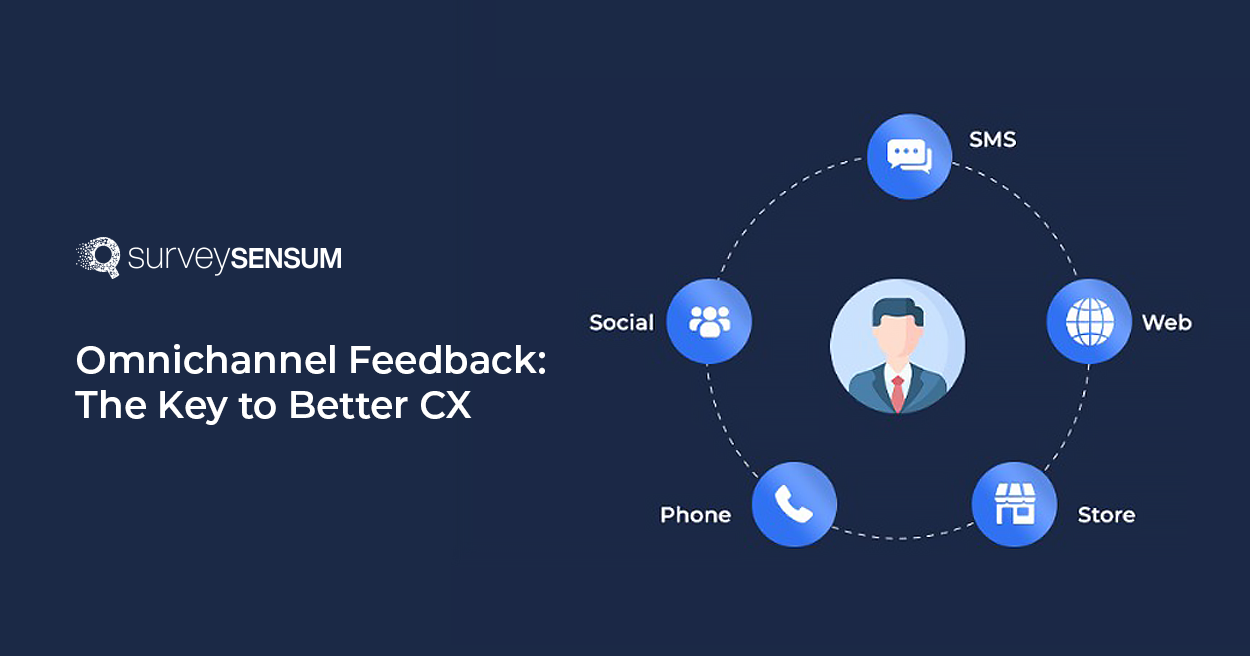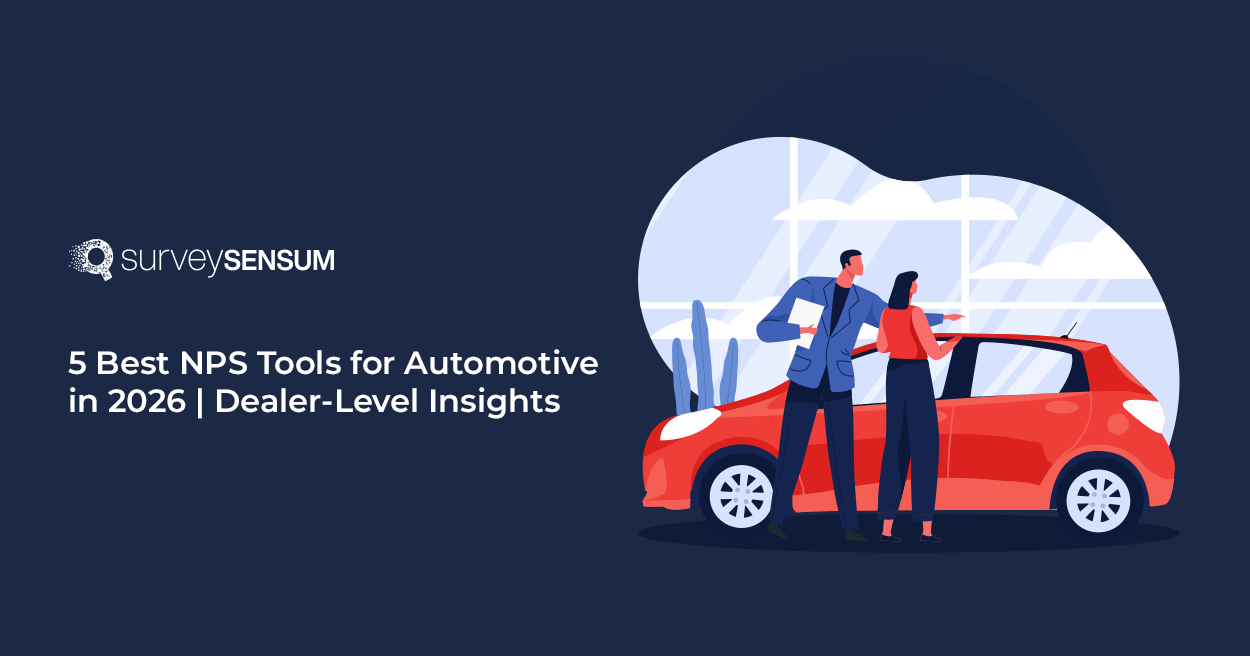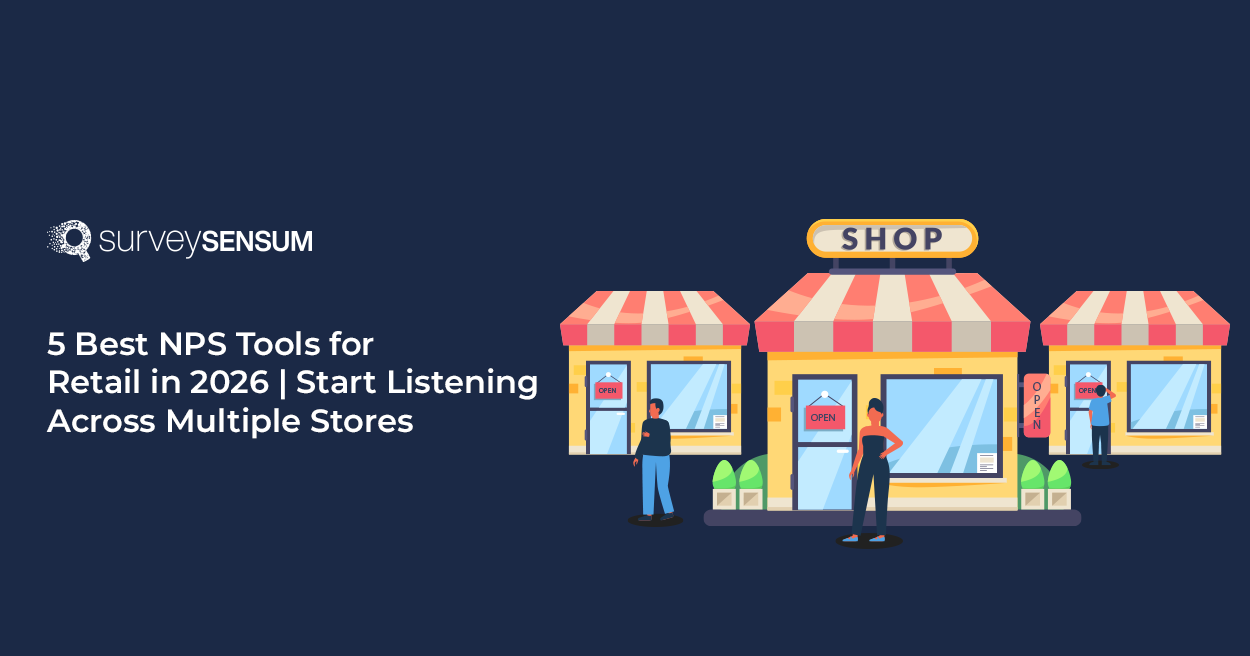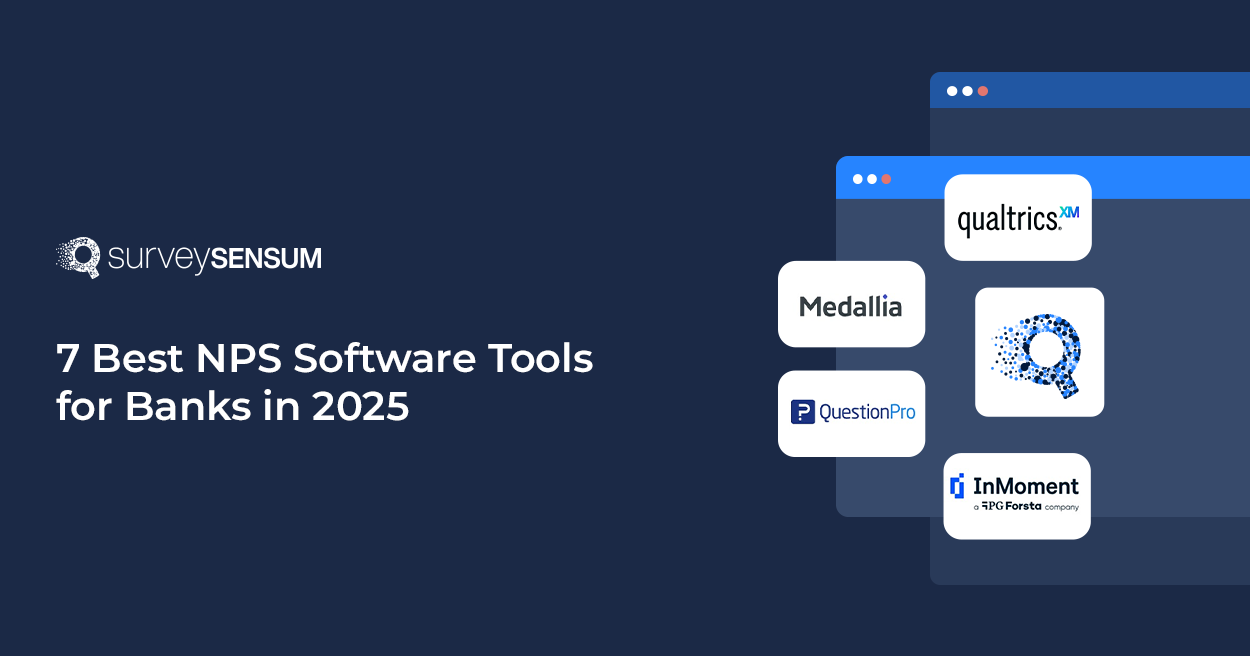

Gone are the days when you’d simply step into the store and make the purchase! You check the product online, or read the review. So are your customers!
54% of customers save products online to buy later, while 53% check them in-store before purchasing. Not just that—the average buyer touches six channels before purchasing, with over 50% using at least four.
But the challenge is – while 73% of customers expect seamless experiences, only 29% of businesses deliver.
The solution: Listen to the voice of the customer.
But too often, feedback remains siloed, missing the bigger picture. Because organizations often operate in silos, treating feedback as channel-specific data rather than piecing together the larger puzzle.
This is where omnichannel feedback comes into play, providing a unified lens to capture customer sentiment across the entire journey. Your customers don’t differentiate between online, offline, or mobile interactions—to them, it’s all one brand.
When you leverage this unified strategy to capture the full journey and turn fragmented insights into revenue-driving actions, you deliver personalized, friction-free experiences that make customers return for more.
But before we get to that, let’s dive into how omnichannel feedback can fix that and lift your customer experience to a whole new level.
What Does Omnichannel Feedback Mean?
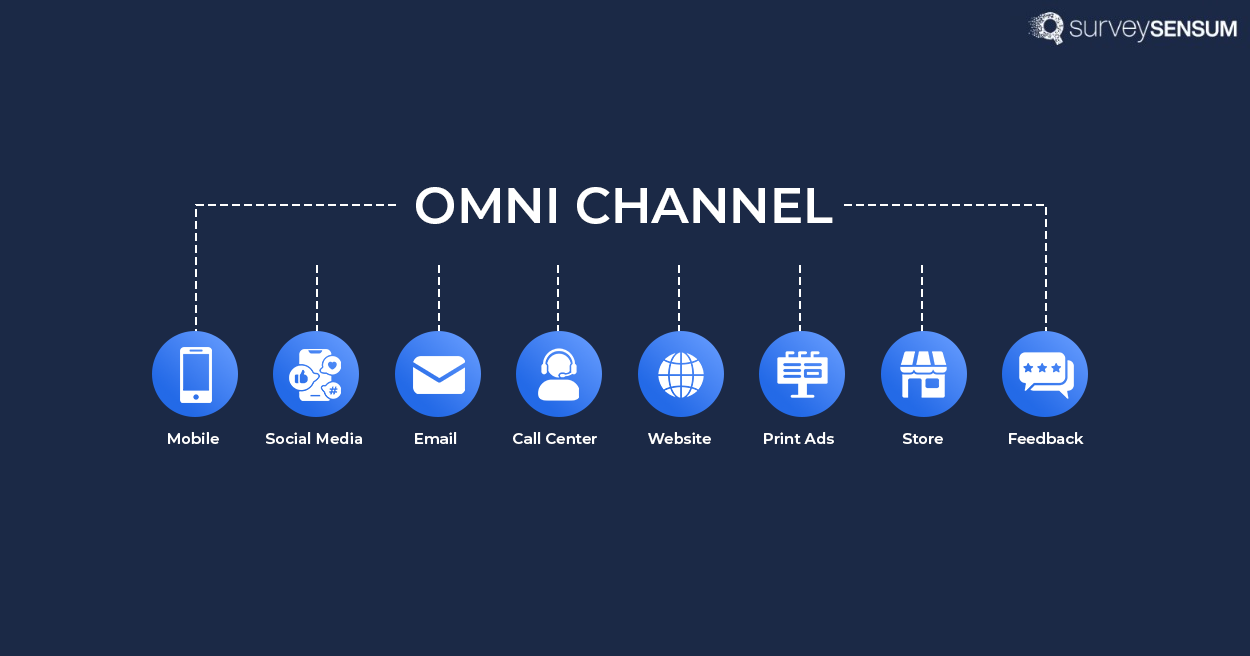
Omnichannel feedback involves collecting customer opinions from every touchpoint— online, in-store, mobile apps, or during support experiences. It’s all about creating a connected system where feedback from all touchpoints comes together, giving you a clear, 360-degree view of your customer’s experience.
For instance, a customer sees your jacket on Instagram, clicks the link to your website, and orders it for in-store pickup. At the store, they’re asked for feedback on their pickup experience. Later, they get an email survey about the product and leave a review through your app.
With omnichannel feedback, all these insights connect seamlessly. You’ll know if they loved the website experience but felt the pickup process was slow, helping you improve at every step of their journey.
This helps you hear the customer’s voice, loud and clear, at every touchpoint—because when you understand their entire experience, you can truly deliver what they need.
Now that we know what omnichannel feedback is, it’s time to dig a bit deeper into the three types of omnichannel feedback.
3 Types of Omnichannel Feedback: The Different Ways Customers Speak to You
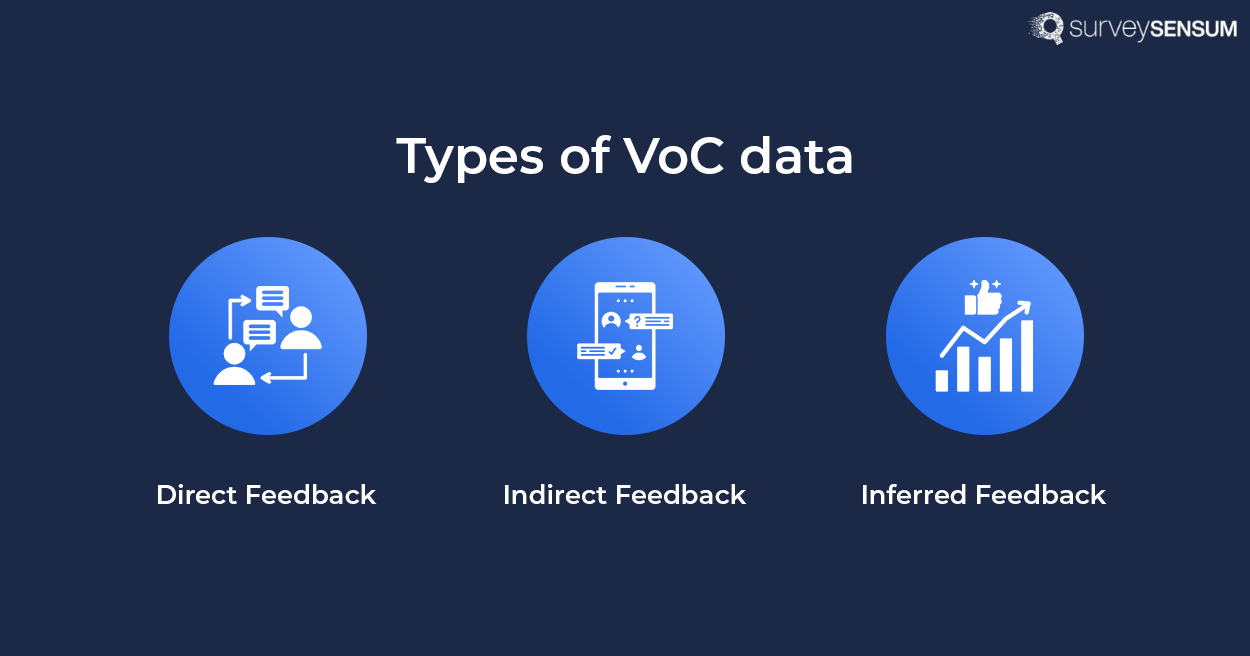
Asking directly isn’t the only way to gain feedback. There are three powerful types of feedback you can use to truly understand your customers’ experiences. Each one offers unique insights, and here’s how they break down:
1. Direct Feedback
This type of feedback comes from structured methods like surveys, focus groups, or customer interviews. By actively asking customers, you get clear insights that help you understand what your customers really think, what they like, and where they see room for improvement. This feedback is invaluable because it gives you the information you need to make informed decisions.
For instance, let’s talk about Netflix. Know about their “thumbs-up, thumbs-down” system? That’s direct feedback in action. By actively asking users what they liked or didn’t, Netflix fine-tunes its recommendations. This feedback isn’t just a feature—it’s a revenue driver.
2. Indirect Feedback
It’s the type of feedback that your customers leave without you telling them to. In other words, as we talk about online reviews and comments, social media, and forum discussions! Although less formal, it does provide you with a real, unfiltered view of how your customer feels about your brand.
Let’s say you own a chain of fitness studios. You didn’t send out a survey, but when scrolling through social media, you notice a few trends. On Instagram, members are posting stories about how they love the variety of classes but are frustrated about the lack of evening time slots. On Google Reviews, someone mentions that while the instructors are great, the locker rooms lack a lot of important elements. None of this feedback comes from a formal survey, but it gives you valuable insights.
3. Inferred Feedback
This is the feedback you can find through data. You can’t get it directly, but you can extract insights how customers behave, how many they buy, and how their interaction with your brand has been shaped. You can glean a deeper understanding and context for their feelings from demographics, past behaviors, and trends.
Amazon is the gold standard here. They track everything—what you search for, what you add to your cart, how long you stay on a product page. Even if you don’t leave a review, Amazon infers your preferences from your behavior. Did you linger over a specific product but not buy it? Amazon might offer a discount or send a follow-up email.
Each type offers a unique window into the customer experience. The secret is to combine them so you get a complete and accurate picture of how your customers feel.
SurveySensum Unifies Your Customer Feedback Across Every Channel and Unlock Insights That Boost Decision–Making!
So, having broken down the types of omnichannel feedback, let’s take a look at why you need omnichannel feedback to improve your customer experience.
Advantages of Omnichannel Feedback Management
Omnichannel feedback transforms your business beyond mere strategy. By capturing insights from every customer interaction, you can drive sales, enhance loyalty, and unlock your ROI. Here’s how.
1. Understand Customer Behavior to Drive CX
How do you know what truly matters to each customer?
By combining feedback with other data points like purchase history, visit frequency, and product preferences, you gain valuable context. With omnichannel feedback, each response gives you the pieces of a bigger puzzle, helping you understand the ‘why’ behind customer actions and boost CX.
To give an example, if the customer regularly browses some category, you can send its tailored product recommendations and directly ask to check if their expectations are being met. This personalized approach strengthens customer loyalty and fosters trust.
2. Increase Revenue & Customer Value
A solid omnichannel strategy can boost your annual revenue by 9.5%. How? When you tap into feedback from every channel, you get a complete, unfiltered picture of your customers’ expectations, frustrations, and needs. This means you can tweak your marketing, sales, and customer service in real-time, making every campaign more impactful and efficient.
But it doesn’t stop there. With omnichannel feedback, you get to understand your customers better—what they like, how they shop, and where they’re struggling. This personalization leads to more engaged customers, which is why omnichannel shoppers have a 30% higher value—they’re more likely to engage with brands that know them and cater to their needs.
3. Attract and Retain Customers with a Seamless Experience
Using omnichannel feedback, you can get your hand on customer sentiment at all the touchpoints, from your website interaction to customer service calls. If customers feel heard, and especially if their feedback is directly used to improve their experience, they tend to come back. In fact, 88% of shoppers are more likely to return because they value the work that goes into building a unified experience that operates seamlessly and consistently based on what shoppers tell us.
4. Maximize Average Order Values
Omnichannel feedback gives you an insight into what customers like and dislike about your products and services at various stages of their journey. Through such insights gathered across multiple touchpoints, you can identify and personalize cross-sell or upsell opportunities to their interests or prior purchases. This leads to a 13% boost in average order values, as you’re offering exactly what they need at the right time.
Now that we’ve covered the benefits, let’s discuss how to harness omnichannel feedback for a seamless customer experience and improved ROI.
How to Leverage the Power of Omnichannel Feedback?
Omnichannel feedback isn’t just about collecting data—it’s about truly understanding your customers at every stage. It serves as the backbone for your marketing strategy by allowing you to gather, analyze, and act on insights from every touchpoint. Here’s how you can use various feedback channels and technologies to refine your CX:
1. Proactively Gather Feedback Using Surveys
Your customers are happy to share their opinions, but to unlock valuable insights, it’s important to use the right channel at the right time. By strategically using surveys across multiple channels, you can capture real-time, relevant feedback that directly impacts satisfaction, loyalty, and overall performance. Here’s how you can leverage different channels to get the data you need, when you need it:
- Email Surveys: Email surveys are cost-effective and scalable, making them perfect for gathering feedback from a large audience. Say, for instance, if a customer buys a product online, you can send a post-purchase survey to gauge satisfaction with the product and shopping experience. The data you collect can pinpoint areas for improvement in customer service, shipping, or even product quality.
- SMS Surveys: SMS surveys are quick and easy for customers to complete, especially after short interactions like a customer support call. SMS surveys boast higher open rates and quicker responses compared to emails.
For instance, if a customer’s issue was resolved over the phone, you can send an SMS survey asking how satisfied they were with the resolution. This immediate feedback provides you with real-time data, helping you identify what went well and what needs improvement.
- In-App Surveys: With the shift towards app-based interactions, embedding surveys directly within your app allows for timely feedback. In-app feedback provides the most accurate, real-time insights because it’s collected immediately after an action.
For example, in a shopping app, after a customer completes a purchase, you can ask about the ease of navigation, payment process, or overall shopping experience. This type of feedback is critical in improving app functionality and user experience because it directly correlates with the actions the customer just completed.
- IVR Surveys: IVR surveys happen automatically after a customer interacts with your business over the phone.
For instance, after a customer calls your help center, an IVR survey is triggered and asks them to rate their experience or answer a few questions. The customer can quickly respond by pressing numbers on their phone’s keypad. This method allows you to capture feedback in real-time from customers who might not engage with online surveys but still want to share their opinions.
2. Use Technology to Harness Indirect Feedback
Not all valuable feedback is directly solicited. Some come from analyzing customer behavior and social interactions, providing a wealth of insights to enhance your strategy. Let’s look at how you can use technology to capture this indirect feedback:
- Social Media Insights: On platforms like Twitter, Instagram, and Facebook, there are customer opinions in the form of likes, comments, and mentions. While it can be challenging to extract clear insights from this unstructured data, social listening tools help track trends and understand customer sentiment. By combining social media insights with other metrics, you gain a broader view of your brand perception. Additionally, User Generated Content (UGC) such as posts, reviews, and videos, can be a powerful source of authentic feedback and is something that people love to share.
For instance, Twitter Spaces recently brought on a first-ever community Q&A, where users asked live questions and gave real, live insights and feedback.

- Website Analytics: This is where feedback and behavior meet. Website analytics, like clickstream data, bounce rates, and conversion rates, tell you how customers are interacting with your website. When you combine these insights with your direct feedback from surveys, you get a complete view of your customers’ experiences.
For example, if you notice high drop-off rates at the checkout stage, that’s a red flag that something on your site might be causing friction. By linking this data to direct feedback from surveys, you can identify exactly where to improve your website experience.
3. Close the Feedback Loop
Collecting feedback is only half the battle. The other half is closing the loop by responding, resolving issues, and engaging with customers about how their input has made a difference. Here’s how you can do it effectively:
- Timely Responses: When a customer takes the time to share feedback, the last thing they want is to be left hanging. Acknowledging their input quickly shows that you’re listening and value what they’ve said.
For example, a customer tags your café on social media, praising the coffee but pointing out slow Wi-Fi. Another leaves a review about delivery delays. These are moments of truth. Addressing them quickly—shows customers you’re listening.

With SurveySensum’s real-time ticketing system, you can take action in real-time and resolve customer pain points promptly. Get detractor alerts, track open & closed tickets, and send automated updates to customers, proving customers that each concern matters.
- Systematic Resolution: After you’ve acknowledged the feedback, it’s time to take action. You need a system in place to ensure that feedback doesn’t just pile up and get ignored. Using tools like CRMs or feedback management software, you can assign the feedback to the right teams for resolution.
For example, if multiple customers report the same bug through an in-app survey, don’t just let that feedback sit there. Route it to your tech team so they can prioritize fixing the issue. That’s where text analytics software shines.

- Engaging Customers: When customers see that their feedback led to actual changes, it makes them feel like they’re part of something bigger. Share stories and updates about how customer feedback has led to tangible changes. When customers see that their voices truly matter, it leads to stronger loyalty, better customer satisfaction, and a more customer-centric business overall.
For example, if a customer suggests a new feature in your product and you implement it, let them know! Share the update and thank them for their valuable input. This makes customers feel like they’re part of a community that is constantly evolving and improving, thanks to their contributions.
Close Feedback Loop Faster With Real-Time Insights Powered by SurveySensum!
4. Analyze and Personalize Feedback Insights
Feedback in isolation doesn’t tell the full story—it’s the analysis that brings it to life. Here’s how you can turn customer feedback into meaningful insights:
- Integrate Feedback with Other Data: To truly understand your customers, combine their feedback with other data like purchase history or previous interactions. For example, if you notice frequent buyers consistently rate the same feature poorly—say, the search functionality on your website—it’s time to dive deeper. Maybe those customers are struggling to find products, and that’s leading to frustration. By integrating feedback with data on their browsing behavior, you can spot issues and improve their experience directly, increasing both satisfaction and sales.
- AI and Sentiment Analysis: Use AI-powered tools to analyze open-ended feedback for emotions and recurring themes. This helps uncover subtle but impactful insights, like frustrations about shipping times or praise for customer support. For example, by analyzing thousands of product reviews, sentiment analysis can quickly identify that a significant portion of customers are upset about delays. Instead of manually sorting through piles of comments, AI tools automatically detect recurring emotions or themes in customer feedback, such as frustration with “slow delivery” or “delayed shipping.”
Uncover True Customer Emotions Using SurveySensum’s AI Sentiment Analysis!
- Journey Mapping: Consolidate feedback from different channels to understand the entire customer journey. This helps pinpoint specific areas needing improvement, ensuring a seamless experience across all touchpoints.
For example, you get feedback from your app users about slow app load times, but they seem happy during in-app purchases. By consolidating feedback from app store reviews, in-app surveys, and customer support calls, you realize that the problem actually occurs during account sign-up. By addressing that specific part of the journey, you can optimize the experience, making it faster and smoother for new users, and increasing retention.
By leveraging omnichannel feedback—whether direct or indirect—and combining it with actionable insights, you can transform your CX strategy. It’s about capturing feedback in the moment—whether through surveys, social media, or website analytics—and using AI tools to uncover deep patterns and emotions that influence behavior.
Multiple Channels, One Journey: SurveySensum Connects the Dots
The customer journey is not linear at all. Customers search for information on the web, check social media, chat with support, and go to stores before finally making their choice. What really made their decision? The answer remains hidden without a unified system.
SurveySensum transforms feedback chaos into clarity. It gathers insights from every channel, adapts surveys to suit each touchpoint, and tracks CX metrics like NPS and CSAT seamlessly. Whether it’s understanding how store layout impacts in-person experiences or identifying the role of social media reviews, SurveySensum ties it all together.
By consolidating and analyzing this data, it reveals not just what’s happening but why. You’ll know which interactions drive loyalty, where gaps exist, and how to refine every step of the journey.






